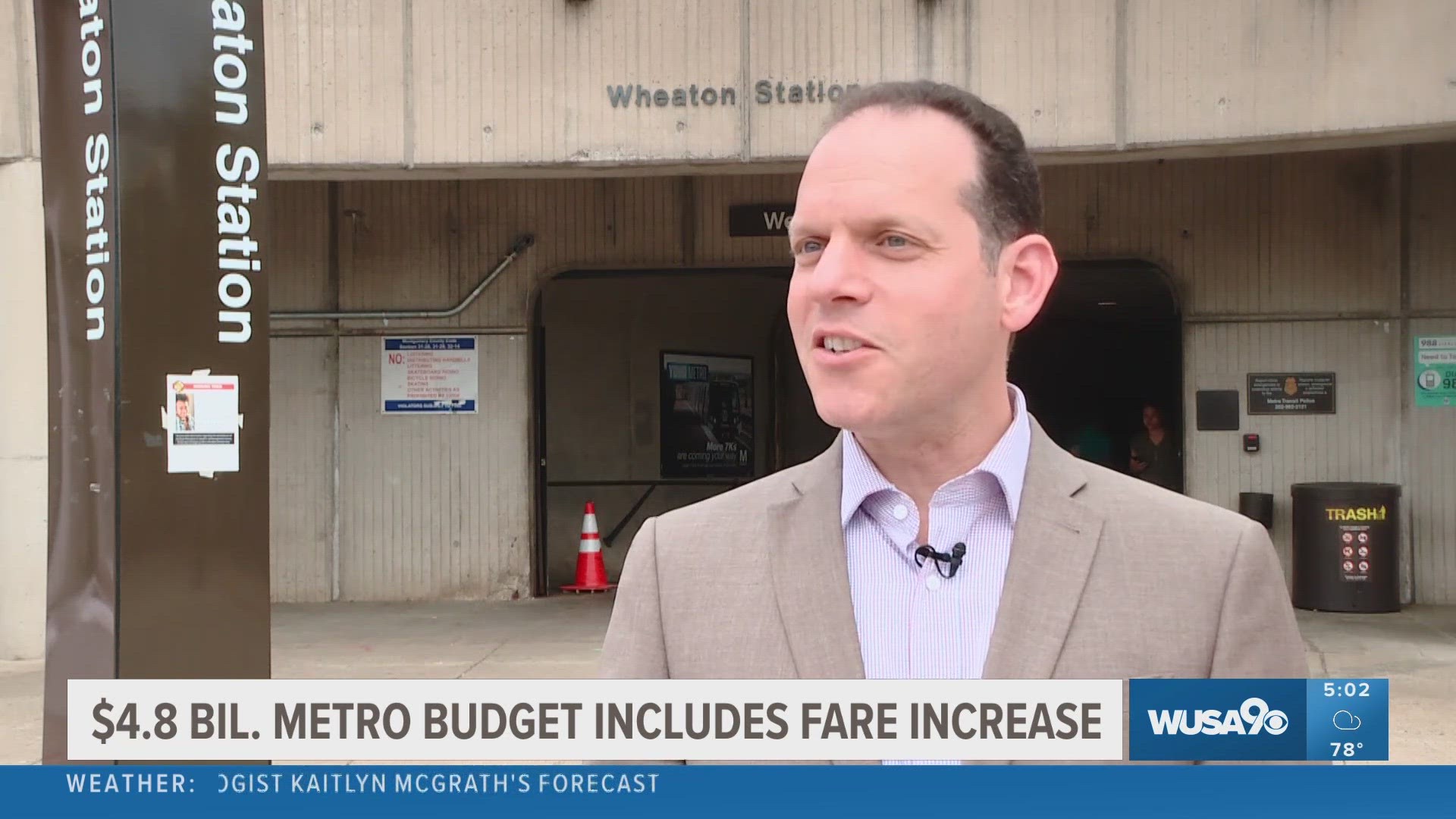WASHINGTON — The Washington Metropolitan Area Transit Authority's Board of Directors approved a more than $4 billion capital and operating budget for fiscal year 2024, which includes an increase on rider fares.
Part of the approved budget is the implementation of new simplified fares that will allow transit to be more affordable for the majority of riders, according to Metro.
“This is a win for customers,” said Board member Sarah Kline. “We know MetroAccess serves our most vulnerable populations. To make this change for customers who use this service really does highlight our focus on equity across all Metro services.”
This is good news for riders who use Metro for short distances during peak times, like rush hour. Now, the base fare will be $2 regardless of peak hours, when it used to cost $2.25 to ride Metro.
However, if you ride more than three miles, the cost to take Metro is going to be more expensive. Where riders used to pay between 21 and 33 cents per mile, depending on the time of day, now riders will pay 40 cents per mile, maxing out at $6.
“Bottom line is we want more people to take the transit and take the Metro. And we have to encourage them to do so," said Montgomery County Council President Evan Glass. "Raising fares I’m not sure encourages them to do so.”
Glass says anyone traveling on the Red, Blue and Yellow Lines that are further out of D.C. are going to feel the pinch.
Metro General Manager Randy Clark says the decision was about fiscal responsibility and fairness, not putting more of the burden on those traveling on the Metro for longer distances. He says it is universal that people who are riding on transit longer will pay more than someone on a shorter commute.
"There’s no transit system that doesn’t work that way," said Clark. "There’s nothing in life that doesn’t work that way. If you’re driving a car and you go two miles it’s going to cost a lot less than if you drive 20 miles, right? So obviously the cost of us to deliver a 25-mile trip is a lot more than a 2-mile trip.”
Meanwhile, low-income riders will see their fares drop substantially. Those who receive SNAP funding will notice their fares cut in half.
“I think it really sets a good level playing field to move forward," said Metro Board Chairman Paul Smedberg.
The board of directors also proposed a change to the budget that will waive the $2 fee for Senior SmarTrip cards after Metro staff conducts a Title VI equity analysis. If approved, the fee would be eliminated.
Metrobus changes, simplified fares and Metro’s first low-income fare programs are scheduled to take effect on or around July 1, 2023.
Additionally, the latest budget predicts ridership to increase by 35% in the upcoming fiscal year, with Metro expecting more than 115 million total riders.
WATCH NEXT: Metro launches campaign against fare evasion

